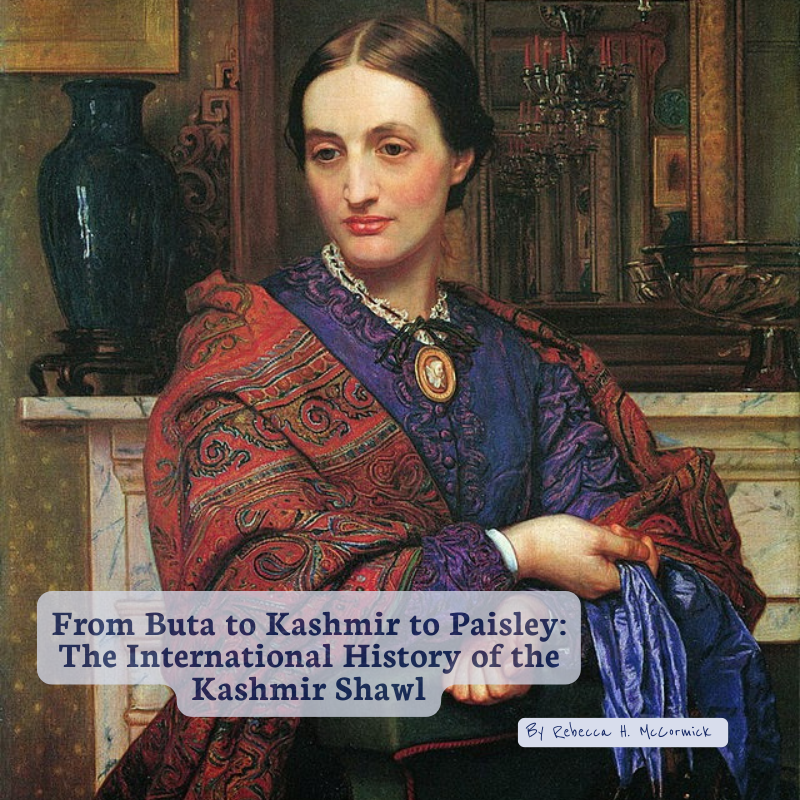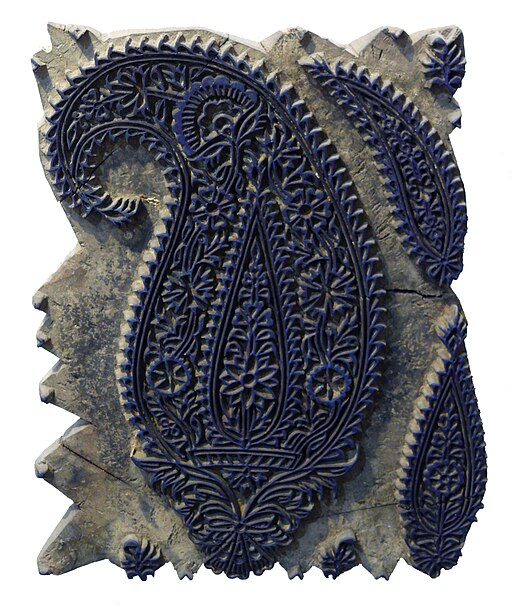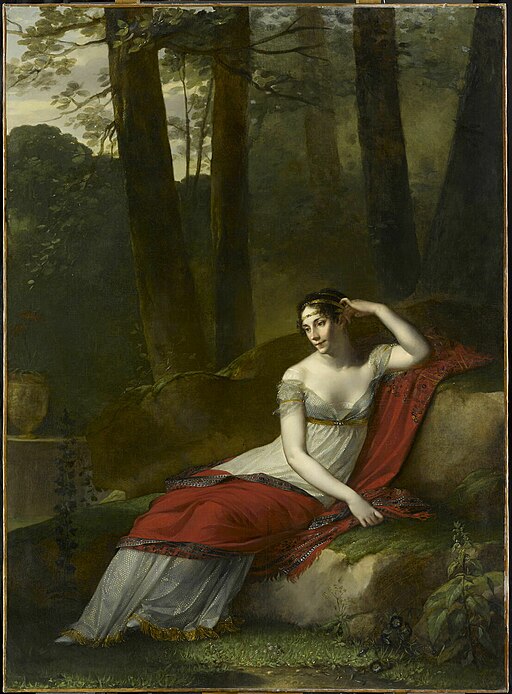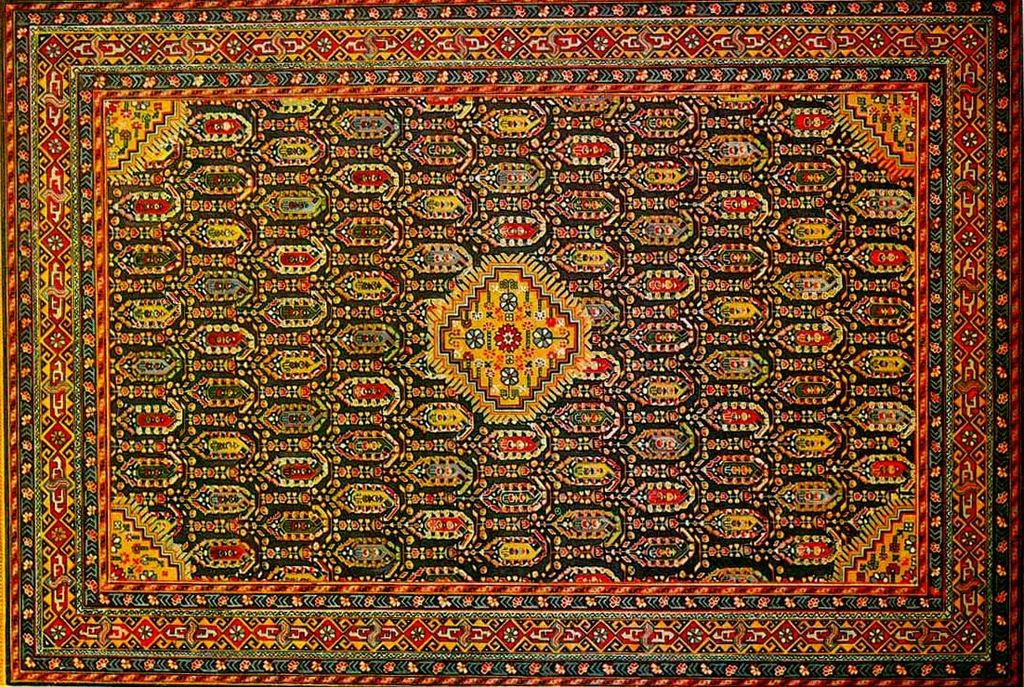
In Persian tradition, the boteh, also called buta, represents life and eternity. It has its roots as far back as the fifth century AD/CE, but it wasn’t until the Safavid dynasty of Persia (1501–1736) that it began to be used widely in textiles. From there, it spread throughout Central and South Asia. There, it remains a popular motif in rugs, shawls, and other decorative arts.
During the British occupation of India in the eighteenth and nineteenth centuries, the British East India Company introduced the Kashmir shawl to Europe. It was an instant fashion must-have. Trendsetters like Empress Joséphine Bonaparte in France and, later, Queen Victoria of England were seen wearing them in public and even in portraits.
But where does that town in Scotland come in?
Paisley, Scotland was Europe’s leading producer of textiles around 1800. Thanks to new technological advances in mechanized weaving, textile producers in Paisley were able to replicate the designs which once had to travel thousands of miles. The Industrial Revolution made many things that were once rare more commonplace, including the buta-covered shawls. But, all good things must come to an end; by the 1870s, Kashmir-style shawls were woefully out of style. Despite Queen Victoria’s attempts to help revitalize the market, Paisley’s shawl-making industry collapsed. Now, we remember Paisley as the namesake for the paisley motif.



